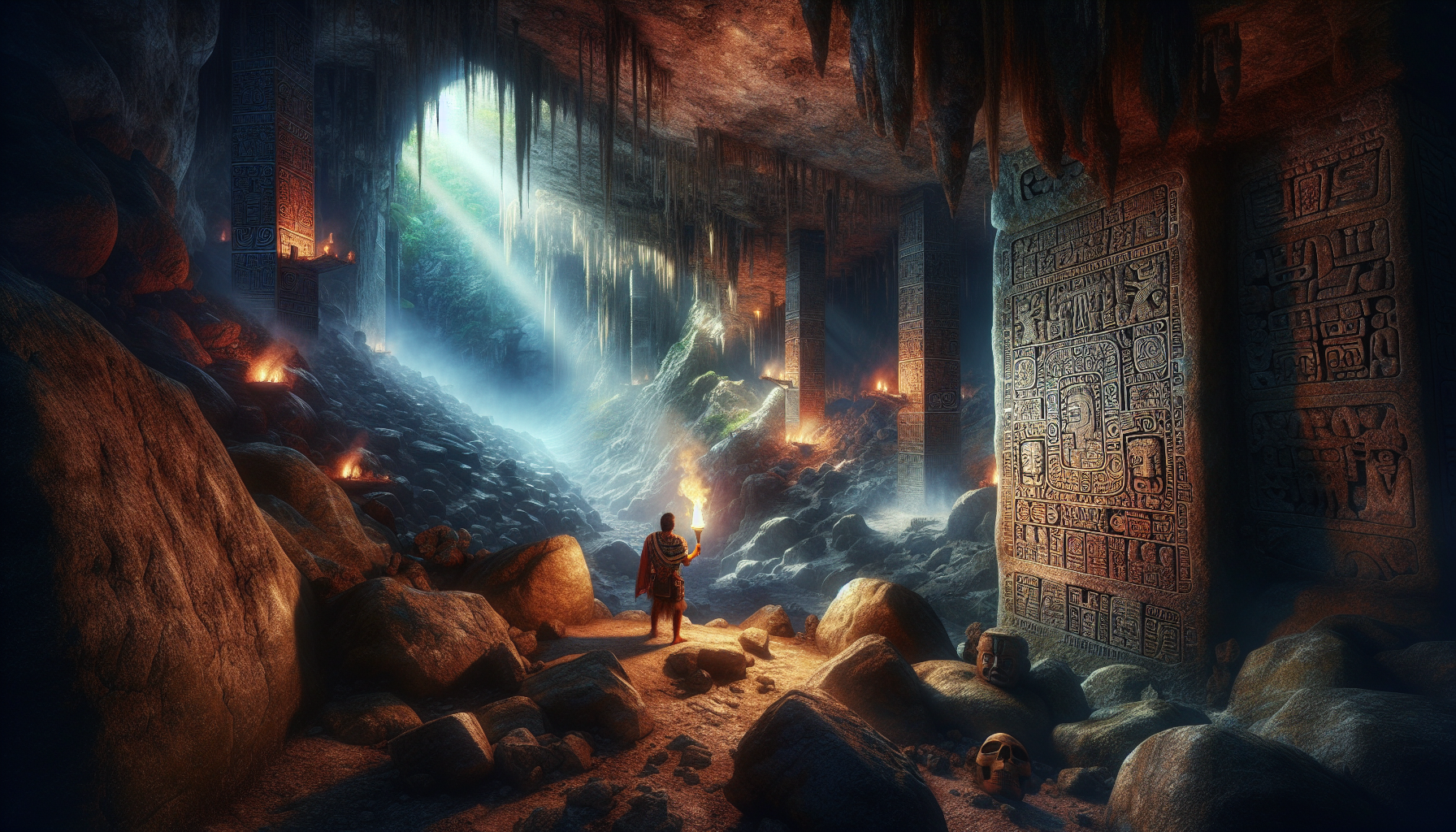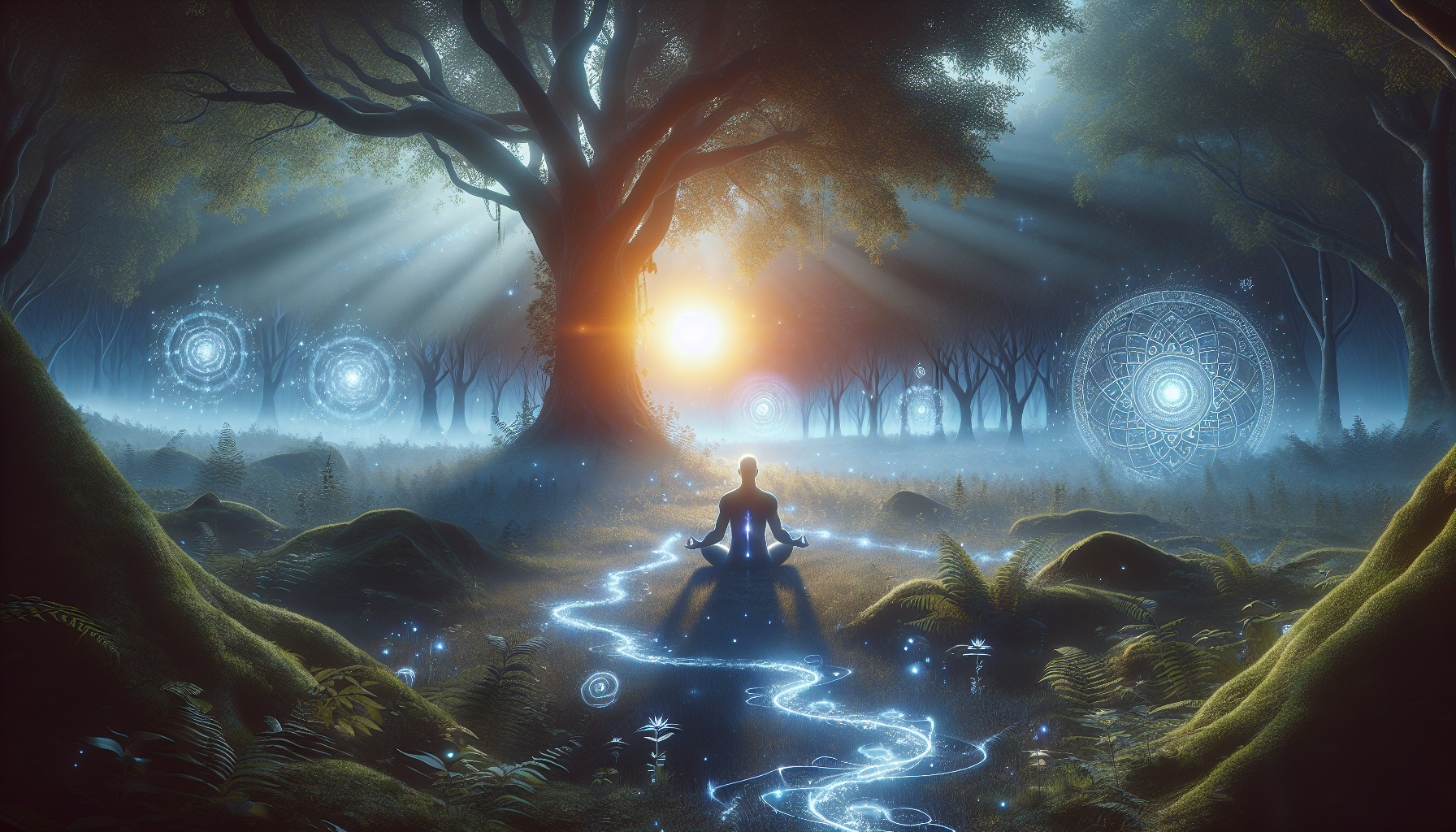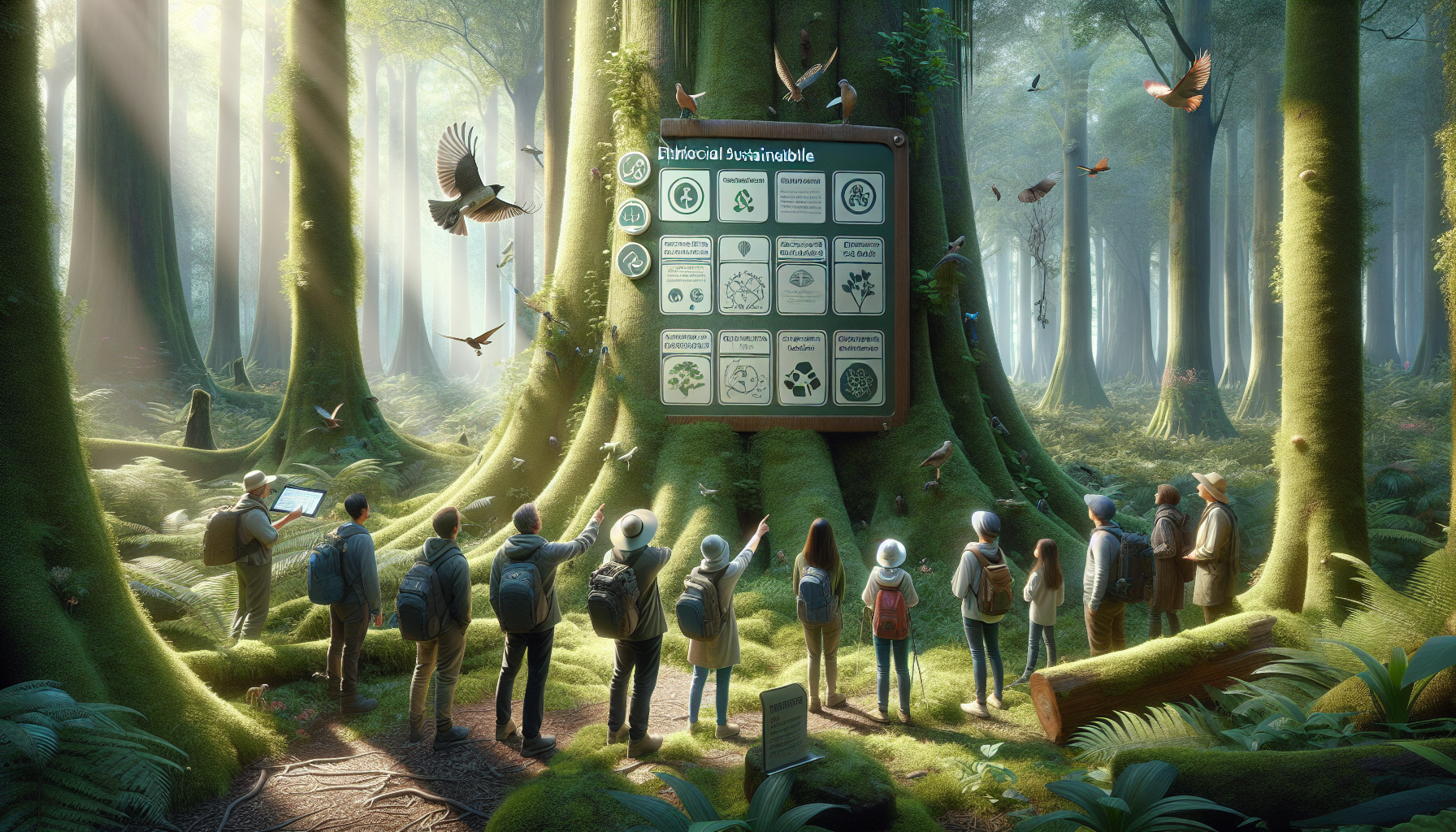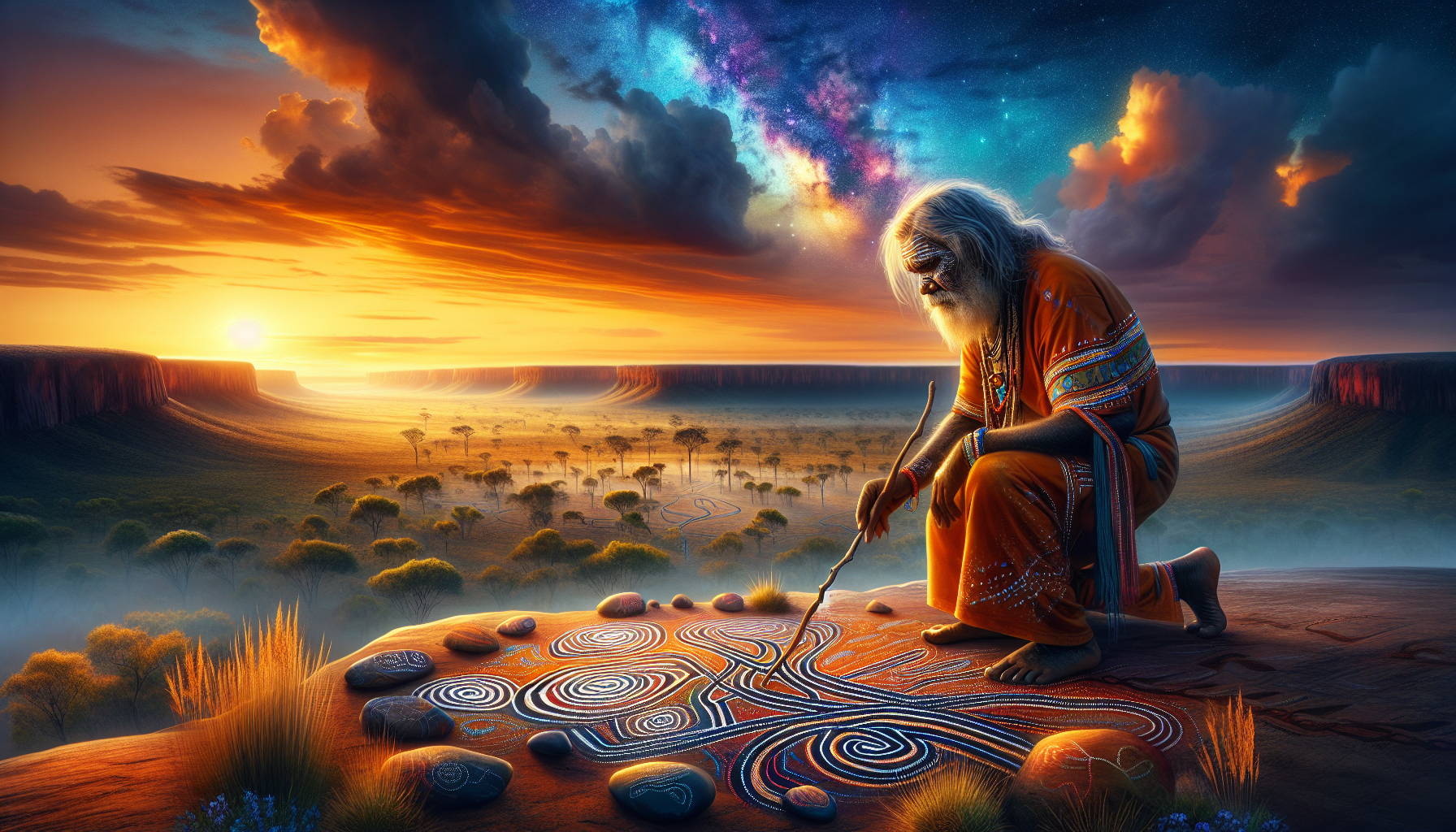Beneath the lush rainforests and sunlit temples of the ancient Mayan civilization lies a world shrouded in mystery and wonder. This underground realm, rich with history and spirituality, offers a glimpse into the profound beliefs and complex cosmology of the Mayan people. The journey into these depths is not merely an exploration of physical spaces but a voyage into the heart of a civilization that thrived for centuries and left an indelible mark on the world. As we embark on this journey, we uncover secrets that have been hidden for millennia, revealing insights into the Mayans’ understanding of life, death, and the universe itself. 🌿
At the core of Mayan belief lies the concept of the underworld, a mysterious and sacred space known as Xibalba. This underworld is not simply a realm of the dead, but a vital component of the Mayan cosmology, representing a place of transformation and rebirth. As we delve into the labyrinthine caves and cenotes that dot the landscape of Central America, we discover the intricate rituals and ceremonies that were performed in these sacred spaces. The Mayans believed these underground realms were portals to other worlds, where gods and spirits could be communicated with, and where the cycles of life and nature were closely observed and honored. Through examining artifacts, murals, and ancient texts, we begin to piece together the complex tapestry of beliefs that guided the Mayan civilization and sustained it for centuries.
In this exploration of the Mayan underground, we will delve into the archaeological discoveries that have brought these hidden realms to light, examine the symbolism and significance of the rituals performed, and consider the lasting impact of these beliefs on contemporary Mayan culture. From the chilling tales of the Hero Twins in the Popol Vuh to the awe-inspiring beauty of stalactite-filled caverns, each discovery adds depth to our understanding of the Mayan worldview. Join us as we journey into the depths of Mayan belief, unearthing the mysteries that lie beneath and gaining a newfound appreciation for a civilization whose legacy continues to captivate and inspire. 🏺✨
Exploring the Depths of Mayan Civilization: A Journey Beneath the Surface
The Mayan civilization, known for its advanced architecture, complex calendars, and astronomical systems, also had a rich tapestry of beliefs and practices that extended far below the surface of the Earth. The subterranean realms of the Mayans are as fascinating as their above-ground temples and pyramids. These underworlds were not merely mythical concepts but were perceived as integral to the everyday lives and afterlife beliefs of the Mayan people. As we delve into the mysteries of these underground realms, we uncover a world where spirituality and physical geography intertwine in fascinating ways.
In the heart of the Yucatán Peninsula, a network of caves, cenotes, and underground rivers forms a labyrinthine world that the Mayans considered sacred. These natural features were often seen as gateways to the underworld, known as Xibalba in Mayan mythology. The cenotes, in particular, were not only vital water sources but also served as ritual sites where offerings were made to appease the gods. This belief in the sacred nature of the underground environment played a crucial role in shaping Mayan culture and religion.
The Mayans believed that the underworld was a complex and challenging place, inhabited by gods and spirits. It was a realm of both death and rebirth, playing a crucial part in the cycle of life. This perspective is reflected in their art, architecture, and writings, which often depict journeys to and from the underworld. Such depictions serve as a testament to the profound significance that the Mayans placed on these subterranean realms, viewing them not merely as afterlife destinations but as vital components of their cosmological worldview.
The Role of Cenotes in Mayan Spirituality
Cenotes, natural sinkholes filled with water, are a prominent feature of the Yucatán landscape. For the ancient Mayans, these were more than just geographical features; they were revered as sacred wells and believed to be portals to the underworld. The Mayans often conducted rituals at these sites, offering precious goods, human sacrifices, and other offerings to their gods in hopes of ensuring prosperity and favor.
The significance of cenotes in Mayan spirituality is underscored by archaeological discoveries that reveal an array of artifacts and human remains at the bottom of these sinkholes. This suggests that cenotes served as a vital link between the physical world and the spiritual realms. The rituals performed here were not merely acts of worship but were crucial in maintaining the balance between the earthly and spiritual worlds, a balance that the Mayans believed was essential for the prosperity of their civilization.
In Mayan cosmology, water was a symbol of life and fertility, making cenotes the perfect settings for rituals dedicated to deities associated with rain, agriculture, and fertility. These ceremonies were often elaborate, involving music, dance, and offerings, all aimed at appeasing the gods and ensuring a bountiful harvest. The reverence for cenotes illustrates the profound connection the Mayans felt with their environment and their belief in the interconnectedness of all life.
Archaeological Discoveries and Insights
The exploration of Mayan underground realms has yielded significant archaeological discoveries, shedding light on the religious practices and daily life of this ancient civilization. Among these findings are intricate pottery, ceremonial objects, and human skeletons, all of which offer a glimpse into the Mayans’ complex relationship with the underworld.
One of the most significant discoveries in recent years has been the uncovering of the Sac Actun cave system in Mexico, which is the largest underwater cave in the world. This network of tunnels and chambers has revealed an abundance of artifacts that provide valuable insights into the rituals and beliefs of the Mayans. The discoveries made in Sac Actun and other similar sites have helped historians and archaeologists piece together the ways in which the Mayans interacted with and revered their subterranean environments.
Additionally, these archaeological findings have contributed to our understanding of Mayan society as a whole. The artifacts uncovered in the underground realms demonstrate the skill and craftsmanship of Mayan artisans, while the presence of human remains suggests a complex set of rituals and beliefs surrounding death and the afterlife. These discoveries continue to captivate researchers and provide a deeper understanding of the rich tapestry of Mayan life.
The Mythological Significance of Xibalba
Xibalba, the Mayan underworld, is a central element of Mayan mythology and religion. Often described as a place of trials and tribulations, Xibalba was believed to be ruled by fearsome gods who tested the souls of the deceased. This realm was not merely a place of punishment but was also seen as a necessary step in the soul’s journey toward rebirth and renewal.
In the Popol Vuh, the sacred book of the Maya, the story of the Hero Twins, Hunahpu and Xbalanque, provides one of the most detailed accounts of Xibalba. The twins’ journey through the underworld is a tale of cunning and bravery, as they face a series of challenges set by the lords of Xibalba. This narrative underscores the belief that the underworld was a place where one’s character was tested, and only those who could endure its trials were deemed worthy of rebirth.
The depiction of Xibalba as a place of transformation is echoed in Mayan art and architecture. Many temples and pyramids are adorned with imagery related to the underworld, emphasizing its importance in Mayan cosmology. This focus on the underworld reflects a broader belief in the cyclical nature of life and death, where the journey through Xibalba was seen as a necessary passage toward renewal and continuity.
Rituals and Ceremonies of the Underworld
The Mayans performed a variety of rituals and ceremonies to honor the gods of the underworld and ensure the safe passage of souls through Xibalba. These ceremonies often involved elaborate processions, offerings, and symbolic acts designed to appease the deities and secure their favor. The use of incense, music, and dance were integral parts of these rituals, creating a sensory experience that connected the participants to the spiritual realm.
Sacrificial offerings were a key component of these rituals, with both animal and human sacrifices being made to the gods of the underworld. These offerings were believed to nourish the deities and maintain the balance between the earthly and spiritual worlds. The sacrifice of human life, in particular, was seen as a powerful act that demonstrated the devotion and reverence of the Mayans toward their gods.
The ceremonies conducted in honor of the underworld deities were not only religious observances but also served as communal events that reinforced social bonds and cultural identity. Through these rituals, the Mayans expressed their beliefs and values, creating a shared sense of purpose and connection to the spiritual world.
Architecture Inspired by the Underworld
Mayan architecture reflects the civilization’s deep connection to the underworld, with many structures designed to symbolize and celebrate the journey through Xibalba. Temples and pyramids often incorporate elements associated with the underworld, such as serpent motifs, stairways descending into the earth, and chambers that mimic the labyrinthine nature of Xibalba.
The Temple of the Inscriptions in Palenque is one such example, where the tomb of the ruler Pakal the Great was discovered. The tomb’s design and the intricate carvings found within depict the journey of the soul through the underworld, illustrating the importance of this belief in Mayan society. These architectural features served not only as places of worship but also as visual representations of the Mayans’ cosmological beliefs.
The influence of the underworld on Mayan architecture can also be seen in the layout of cities and ceremonial centers. Many of these sites are aligned with celestial events and natural features, such as caves and cenotes, further emphasizing the interconnectedness of the physical and spiritual realms. Through their architecture, the Mayans created spaces that facilitated communication with the gods and the underworld, allowing them to maintain a harmonious relationship with the divine.
The Modern Relevance of Mayan Underworld Beliefs
Today, the beliefs and traditions surrounding the Mayan underworld continue to captivate scholars, archaeologists, and the public alike. The ongoing exploration and study of these underground realms provide valuable insights into the spiritual and cultural practices of the ancient Mayans, offering a window into their world and worldview.
Modern interpretations of Mayan mythology and cosmology have led to a renewed interest in the civilization’s underground realms, inspiring a range of artistic and cultural expressions. From literature and film to visual arts and music, the mystique of Xibalba and the Mayan underworld continues to influence contemporary culture, demonstrating the enduring impact of these ancient beliefs.
For those interested in exploring the mysteries of the Mayan underworld further, a wealth of resources and experiences are available. From guided tours of archaeological sites to academic publications and documentaries, there are numerous ways to delve deeper into the fascinating world of Mayan spirituality and cosmology. 🏺🌌
- Visit the Sac Actun cave system, the world’s largest underwater cave, to witness firsthand the incredible archaeological discoveries.
- Explore the Temple of the Inscriptions in Palenque to understand the architectural representation of the underworld journey.
- Engage with modern interpretations of Mayan mythology through literature, film, and art.
The Role of Archaeology and Preservation
Archaeological efforts to uncover and preserve Mayan sites have been instrumental in advancing our understanding of the civilization’s beliefs and practices. Excavations and research projects continue to reveal new information about the Mayans’ relationship with the underworld, contributing to the broader field of Mesoamerican studies.
Preservation initiatives are also crucial in safeguarding these invaluable cultural and historical sites for future generations. Efforts to protect and maintain the integrity of archaeological sites ensure that the rich legacy of the Mayans can be appreciated and studied by scholars and enthusiasts alike. These initiatives highlight the importance of preserving the past to inform and inspire future exploration and understanding.
The role of technology in archaeological research has also transformed the study of Mayan underground realms. Advanced techniques such as LiDAR, 3D modeling, and underwater exploration have enabled researchers to uncover hidden sites and artifacts, offering new perspectives on the Mayans’ spiritual and cultural practices. These technological advancements continue to push the boundaries of our knowledge, revealing the depth and complexity of the Mayan civilization.
Encouraging Exploration and Engagement
For those eager to explore the mysteries of the Mayan underworld further, a range of opportunities exists to engage with this fascinating aspect of history. Educational programs, guided tours, and immersive experiences provide unique insights into the beliefs and practices of the ancient Mayans, allowing individuals to connect with the past in meaningful ways.
Whether visiting archaeological sites, participating in cultural events, or delving into academic research, the exploration of Mayan underground realms offers a rich and rewarding experience. By engaging with the history and culture of the Mayans, individuals can gain a deeper appreciation for the complexity and sophistication of this ancient civilization.
For a visual introduction to the captivating world of Mayan underground realms, watch this insightful video: Exploring Mayan Cenotes: Sacred Wells of the Yucatán – National Geographic. This video provides an overview of the significance of cenotes in Mayan spirituality and offers a glimpse into the ongoing research and exploration of these fascinating sites. 🎥
Conclusion
Unveiling the mysteries of the Mayan underground realms has been a journey not only into the depths of ancient belief systems but also into the heart of a civilization that continues to fascinate scholars and enthusiasts alike. Throughout this exploration, we’ve delved into the intricate ways in which the Mayans conceptualized the underworld, a domain rich with spiritual significance and cultural depth.
The Mayans saw the underworld, often referred to as Xibalba, not merely as a place of darkness and fear but as a vital component of their cosmology. It was a realm where gods interacted with mortals, a place of trials, and a critical stage in the cycle of life, death, and rebirth. The Mayan underworld was intricately woven into their mythology, ceremonies, and even their daily lives. We explored how caves, cenotes, and other natural formations served as physical and symbolic gateways to this mysterious world, bridging the terrestrial and the divine.
One of the key takeaways from our exploration is the Mayan’s profound relationship with nature and their environment. The use of natural landscapes as spiritual symbols highlights their respect for and understanding of the world around them. This connection reminds us of the importance of living in harmony with nature, a lesson that remains relevant in today’s environmental discourse.
We also examined the archaeological and anthropological perspectives on these underground realms. The ongoing discovery of artifacts and sacred sites continues to shed light on Mayan practices and beliefs. Such findings not only enhance our understanding of their sophisticated society but also preserve the legacy of their rich cultural heritage. The work of archaeologists is crucial, as it not only uncovers the past but also inspires current and future generations to appreciate and protect our shared human history.
Furthermore, the Mayan view of the underworld as a place of trials and transformation offers us a metaphorical lens through which to view our own challenges. Just as the Mayans believed in the journey through darkness to reach light, we too can find strength and hope in overcoming our obstacles.
As we conclude this exploration, it’s essential to acknowledge the timeless relevance of the Mayan perspective on life and death. Their beliefs remind us that the journey through life is interconnected with the spiritual world, urging us to reflect on our own beliefs and how they shape our existence. By understanding the past, we can gain insights into our own cultural and spiritual practices, encouraging a deeper connection with the world around us.
In light of this exploration, I encourage you to reflect on what you’ve learned and consider its application in your own life. Whether it’s fostering a deeper respect for nature, finding inspiration in overcoming personal challenges, or simply appreciating the rich tapestry of human history, the lessons from the Mayan underground realms are vast and profound.
Feel free to share this journey with others, as spreading knowledge and fostering discussion can lead to greater understanding and appreciation of different cultures. You are invited to comment and share your thoughts and insights, fostering a community of learning and respect. By engaging in dialogue, we continue the legacy of the Mayans, who valued storytelling and oral tradition as a means of preserving and passing down knowledge.
To further explore these fascinating topics, you can refer to the following resources:
– National Geographic’s coverage on Mayan archaeology [https://www.nationalgeographic.com/archaeology-and-history/maya]
– The Archaeological Institute of America’s insights into Mayan sites [https://www.archaeological.org/fieldwork/maya]
In closing, the journey into the depths of Mayan belief is more than an academic exercise; it is a reminder of the interconnectedness of all human experience across time and space. Let us carry forward the wisdom of the past, embracing the lessons learned and allowing them to illuminate our path forward. 🌎✨

Toni Santos is a visual storyteller and symbolic naturalist whose creations explore the hidden ecologies and forgotten bonds between humans and nature, as whispered through ancient lore. Through an intuitive and myth-sensitive lens, Toni reveals the sacred choreography between flora, fauna, and human spirit — a world where trees once spoke, rivers remembered, and every herb carried a secret name.
His journey is rooted in the esoteric — in the rituals of forest-dwellers, the botanical codes of shamans, and the unspoken pacts that shaped how ancient peoples lived in deep, reciprocal harmony with the natural world. From sacred groves to serpent-guarded springs, each of Toni’s works reflects a symbolic relationship long obscured by modern forgetfulness.
With a background in visual design and ancestral aesthetics, Toni merges storytelling with sacred ecology. His pieces don’t simply illustrate — they channel. Drawing from myth, mysticism, and lost herbal traditions, he crafts visuals that resonate with the old wisdom: that nature is not background, but kin.
As the creative spirit behind Vizovex, Toni shares collections, visual studies, and articles that illuminate the occulted connections between human life and the wild world. His work calls on us to remember — not just with the mind, but with the senses and the soul — the profound dialogues our ancestors once had with earth, plant, and animal.
His work is a tribute to:
The mythic language of trees, stones, and roots
Forgotten pacts between healers and the wilderness
The sacred knowledge carried in nature’s unseen patterns
Whether you’re a seeker of ancient plant-lore, a mystic attuned to seasonal cycles, or simply someone who hears the forest speak, Toni welcomes you to wander a space where symbolism, nature, and spirit entwine — one myth, one leaf, one vision at a time.




